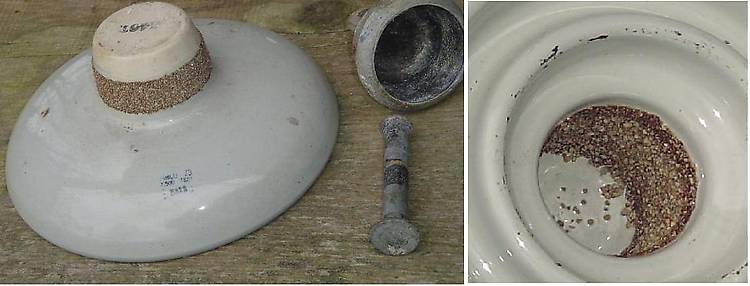Parts of a Suspension
By James Mulvey; posted February 14, 2010
View Original: Click to zoom, then click to magnify (989 x 377) 52KB

|
The parts that make up a porcelain suspension. The porcelain disc has a band of sharp small stones added to the glaze underneath where the metal cap will be. Above this band the porcelain is unglazed. . The underside of the disc shows a similar band of small sharp stones . The metal cap has a thin layer of tar like substance that only contacts the unglazed top section of the porcelain. The remainder of the space between the metal cap and the porcelain disc is filled with cement . The pin that goes in the underside of the disc has a ball on one end, to hang the next suspension from. The other end of the pin flared to prevent it pulling out of the disc when it's under load. The space around this pin and the band of stone is also filled with cement. The small stones are added to create a gripable surface between the cement and the porcelain. ( To achieve the same result glass discs use a different approach, having ridges moulded in to the glass instead of sharp stones. They also use a layer of the tar like substance completely covering the inside of the metal cap. I assume to prevent breakage due to expansion and contraction which is different for metal and glass as the temperature changes.) A patent was issues to Locke in 1939 for their idea of using granular pieces imbeded in the glaze to join the cap and body of a suspension. Their application went on for three pages. I used to think that because of their weight, that each suspension had a few pounds of steel in it. The truth is, porcelain is just plain heavy, as there is very little steel used in their construction. |